The constant obsessive intrusive thoughts and compulsions are hard to break free from. But, it’s not impossible. Are you someone who suffers from OCD or Obsessive-Compulsive Disorder, and you are trying very hard to tackle this for a long time?
She is halfway down the driveway, juggling car keys and coffee in one hand, a briefcase and papers in the other, when ‘The Worry’ suddenly comes to her mind, just as it does every morning. “Did I remember to lock the front door?” she hears in her mind. The question is more of an accusation than a question.
Like a highly trained soldier performing an about-face, the woman swivels 180 degrees and double times her pace back to the house. She then vigorously twists, turns, jerks, tugs, and otherwise assaults the handle of her front door. After a brief tussle, she feels reassured that the door is indeed locked.
With a sigh of relief, she heads back to the car, gets in, takes a deep breath, and starts the engine. Just then a sharp tinge of anxiety pierces her newfound calm. “But did I really twist the doorknob hard enough to know if it was really, really, really locked?” Biting her lower lip the seconds tick by. She can’t be 100% sure.
Swearing under her breath she gets quickly out of the car, trots up the driveway one more time, and vigorously tests the door handle again (Round Two). “OK, stop being ridiculous” she mumbles to herself. The anxiety begins to ebb away, replaced with frustration and embarrassment.
Down the driveway, she heads for the third time that morning. Shifting the car into drive she heads down the street. Looking at her watch she thinks “Not bad, I can still make it to work on time.” Just then another thought comes to mind “But did I lock the back door?”
A high school student slowly pushes his books away and stands up. The past five hours have been entirely focused on chemistry. His eyelids feel like they are made of lead. Sleep is rapidly advancing on him, despite his best efforts to remain awake. Stumbling to his bed he crashes down on the mattress like a tree being felled in the woods.
His muscles uncoil, and sleep begins to wash over him in a warm wave. But life is seldom simple for this teen. Suddenly his eyes blink wide. Scanning the room, he looks over to the desk.
“How could I be so stupid?” he moans. His notecards are laying on top of a pen. What’s more, two textbooks have been left open next to his desk, and his spare reading glasses lay on the bottom shelf of his bookcase.
A sense of dread begins to coil around his heart. Jumping out of bed he totters back to the desk.
Five minutes later the desk is tidy. All but a few items were placed neatly into drawers. Those few things left on top of the desk have been painstakingly arranged and rearranged until they were perfectly situated. These ‘on the desk’ items form a small cadre, a group whose membership has not varied for the past three years: a spiral-bound notebook, two pens (one with black ink, one with blue ink), a stack of Post-it Notes, a metal ruler and spare pair of reading glasses.
Each is meticulously placed so as to make one long row, each item being 4 inches from the top edge of the desk.
When you know in your heart that something tragic will happen if your desk is not perfectly neat, there is little room for making a mistake.
The little girl sits alone, wracked by anxiety because she is angry with her mother. She knows with certainty that these angry feelings will eventually lead to the death of her parent. How could she be so reckless as to let her anger become so strong she wonders? The guilt of this moment, and so many moments preceding it, is crushing.
Read: What is Obsessive Compulsive Disorder (OCD): Symptoms, Causes and Treatment
Her only hope now is to reverse the impact of her anger by visualizing her mother being perfectly healthy. The little girl knows if she can do this, and hold that picture in her mind for one full minute, the danger will have passed. The mother’s life, in the child’s view, depends on this – and it is all her fault. It was her angry feelings that endangered her mother, now she must fix the problem.
The difficulty that continues to arise is that each time she attempts to think of her mother as perfectly healthy some imperfection comes to mind. She recalls when her mother had a cold, or cut herself while cooking, or simply looked a little tired.
Who knew how hard it would be to conjure up a perfect visualization and hold it in one’s mind for a full minute?
The little girl has been trying to do this for the past hour, and it will be another hour before she feels satisfied with her efforts, and her mother’s safety is secured.
Obsessive-Compulsive Disorder (OCD)
So, what is the one thing each of the people above has in common?
They struggle with Obsessive-Compulsive Disorder (OCD).
Living with OCD-like personality qualities is often painful. Living with intense OCD, however, is more than just painful. It is life-altering. Debilitating.
Some people with extreme OCD spend several hours every day repeating specific behaviors just to win a few brief moments of relief from their overwhelming anxiety. Others end up losing relationships, being fired from their job, and becoming severely depressed due to the impact OCD has created in their life.
Whether one’s OCD is at the extreme end, or in the moderate range, it is a disorder capable of robbing one of their potentials. Left unchecked OCD will suck the joy out of life, hem you in, close off paths to growth, and leave you with a sense of chronic frustration and self-doubt.
Obviously, that won’t do. If you are reading this article you clearly want to fight back. You want to win freedom for yourself or help someone you care about to win their freedom from OCD.
Terrific. That’s what I want to help you accomplish. To start with we need to get clear about what OCD looks like. To win this battle you need to know your enemy. So, let’s get started with this first step.
Read 5 Signs You Might Have OCD (Obsessive Compulsive Disorder)
Features of Obsessive-Compulsive Disorder (OCD)
Experiencing some degree of anxiety is simply a part of life. At times, however, anxiety may become so intense that it begins to heavily weigh on you. This type of extreme anxiety can take many forms, showing up in a variety of symptoms.
When thinking of OCD there are two main features to keep in mind:
1. Unrealistic, intrusive, and recurrent thoughts or urges that create anxiety. This is the ‘obsessive’ part of OCD.
2. Attempts to suppress these worries, urges, or thoughts by repeatedly performing some behavior, or thinking some particular thought. This is the compulsive part of OCD.
Simple, right? Let’s take a closer look and begin with examples of common ‘compulsions.’
- Excessive hand washing
- Arranging and then arranging again (and again) some set of objects
- Checking (such as returning to the house repeatedly to check that the front door is locked)
- Counting (as when someone feels the need to count the holes in the ceiling tile over and over)
- Perfectionistic rituals that include repeating the same thought or behavior over and over until it is completed ‘perfectly’
These are only a few of the many examples that could be given. The important point is to realize that the ‘obsession’ (intrusive/disturbing thought that will not go away) is responded to with some type of compulsion. The function of the compulsion is to remove the obsession and thereby bring about some relief from anxiety.
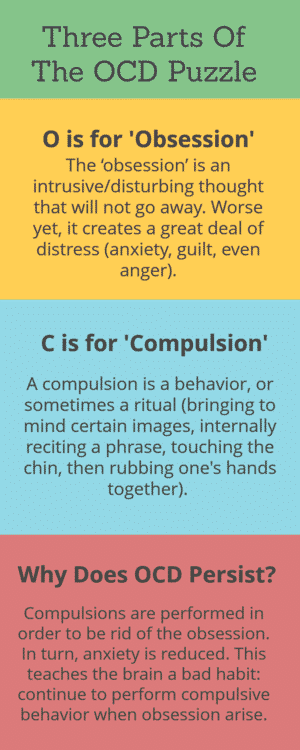
Compulsions may be thoughts or behaviors. Whatever form they take, compulsions create a horrible burden on the sufferer of OCD. They often take an enormous amount of time to perform and frequently cause great difficulties in a person’s life.
Rechecking that a door has been locked can take an hour for someone with OCD. Returning home after work and needing to check for intruders may take several hours. Especially when you feel as though even the refrigerator must be examined to see if someone is hiding inside.
Going to sleep at night can be delayed indefinitely when your nightly prayers need to be said with a pure heart…. And you always find some way in which your heart remains impure.
Types of OCD
Obsessive-Compulsive Disorder tendencies express themselves in a variety of ways, some more common than others. What the compulsion is focused upon is a helpful way to parse OCD in order to understand it better.
Below is a list of the most common types of compulsions. Although most people who suffer from OCD will generally fall into only one of these categories, it is certainly possible to have compulsions within several of these groupings.
1. Washers & Cleaners
What triggers the washing/cleaning: anything that might contain germs or give rise to feelings of being contaminated or dirty.
What sort of intrusive thoughts occur: “This is disgusting. There must be germs all over this thing. I’ll get sick if I touch it.” “I better hold my breath, that pile of trash is foul and probably letting off airborne germs that will infect me.”
What sort of compulsive behaviors occur: Avoidance of places/things where this fear arises. Relentlessly washing hands, cleaning surfaces, disinfecting objects.
2. Checkers
What triggers the checking: anytime when a mistake might be made which could result in harm (this includes leaving home, making a fire in the fireplace, ironing clothes, etc.).
What sort of intrusive thoughts occur: “Did I check that the front door is locked? If I forgot to do that someone could sneak in and rob us.” “Did I put the fire out in the fireplace? If a little hot ash rolls out to the floor we could all die in a fire.” “Did I turn off iron? I can’t be 100% sure I did. I think I did. Hmmm. If I’m wrong the house could go up in flames. Let me go check one last time.”
These fear-laden questions create even greater anxiety that then leads the person to check ‘one more time’ that the door is locked, or the fire has been put out, the iron turned off, and so forth. Eventually, the double-checking results in just enough of a sense of relief to free the person to move on in his/her day.
Even so, it will not be long before another fear emerges and requires similar compulsive checking behavior.
3. Repeaters
When you suffer from OCD that leads to repetitious behavior it is usually due to believing that certain things must be done perfectly. No exceptions.
Moreover, what needs to be performed with perfection is not necessarily something of intrinsic importance. It might be the way one enters a room or grasps a doorknob, or sets the dinner table, and so forth.
This is what makes the compulsions particularly maddening. If one felt such a need for perfection because brain surgery was being performed it would be understandable. But over how the laundry is folded, or the garage is swept?
The thoughts that propel one to repeat this behavior focus on unrealistic but calamitous consequences if perfection is not attained. Someone may die, or fall ill, or others will decide to leave and never return.
The OCD sufferer usually recognizes that these fears make no rational sense at all. Zero. Nada.
But at a gut level, it feels as though they are pressing in from all sides. A sense of dread and urgency mix together forming a final certitude that unless perfection is acquired, horrible consequences will follow.
The result is that certain thoughts, or behaviors, are repeated again and again until a sense of perfection is acquired. This may take a few minutes, or it may take several hours.
Read 9 Things People Don’t Realize You’re Doing Because Of Your OCD
4. Hoarders
The term ‘hoard’ comes from the Old English word ‘hord’ which referred to a treasure, some valuable stock, or storage. Not surprisingly hoarder comes from the Old English term hordere meaning “a treasurer, steward or chamberlain.”
The OCD hoarder does not focus on the treasure. Far from it. In fact, often there is no focus at all other than the steady refusal to discard worthless items. As a result, these folks tend to accumulate massive amounts of clutter.
What type of clutter? Could be virtually anything: gum wrappers, stacks of magazines that fill entire bedrooms, clothing that is worn out or no longer fits, empty soda cans that are never recycled, etc.
The fear that most hoarders have is that once they throw something away they will, sometime later, find that it was needed. An even more compelling reason many hoarders give for not throwing items away is that the object has sentimental value. The problem here is that hoarders become sentimental about many items. For example, a hoarder may keep the fast-food bag that contained hamburgers from their junior prom date.
Many hoarders will also admit that when they throw things away it provokes an odd sense of being incomplete. A feeling that they are missing something essential in their life.
Their solution for avoiding such discomfort is to hang onto things that others easily discard.
The end result of hoarding is a life that becomes smaller and smaller. The OCD hoarder’s home becomes filled with items that give him, or her, little pleasure. Disorganization is the norm, so as the collection of hoarded items grows so does a depressive sense of chaos and lack of control.
Eventually, the hoarder finds it difficult to navigate his/her own home due to the massive number of objects that clutter the floor, and are stacked ceiling-high against the walls. Friends are not invited overdue to embarrassment about the state of the home. A sense of helplessness and self-reproach is common.
5. Obsessors
The last subtype of OCD we will look at is the ‘obsessors.’ Some might think that this type of anxiety does not really fall under OCD because it often lacks the traditional compulsive solution that momentarily resolves anxiety.
That is, unlike other types of OCD where a specific ritual, behavior, or thought, is performed and anxiety subsequently resolves, the solution for obsessors is often not quite so clear.
The ‘obsessor’ OCD individual becomes anxious when various thoughts come to mind. These may be random, and nearly always are meaningless. It may be that after reading a news report of some tragedy the person thinks “What if that happened to my child?” An image of their child in that tragic situation briefly forms whereupon the obsessor thinks “I wonder if I want that to happen to my child?” This question then proceeds to haunt the obsessor, and a sense of nearly unbearable guilt/shame frequently follows.
Such intrusive thoughts are not limited to themes of violence but also include sex, impulsive behaviors that break societal norms, and activities that go against the person’s deepest held beliefs regarding right and wrong.
The response to having these intrusive thoughts, as noted before, is to question one’s own integrity and virtue. It is as if the unbidden thought (which most people would discard as being an odd and meaningless neuronal hiccup) holds dark secret truths about one’s mental state.
The person will normally proceed to dwell on the thought, examining it from every angle with the hope that by doing so he, or she, will discover that the thought does not mean what they fear.
This compulsive behavior generally provides little relief, and what it does provide is short-lived. Other common reactions include repeatedly praying, silently counting, repeating a specific phrase or word, and seeking reassurance from a trusted confidant.

Patterns Of Anxiety
Before going further, it is important to briefly look at how OCD-related thoughts, feelings, and behaviors work together in a way that makes it difficult to stop worrying.
I want to start by pointing out that each of the OCD subtypes we just looked at shares one fundamental similarity. Namely, some event or thought triggers an intrusive thought which gives rise to anxiety that in turn is responded to with a compulsion (through behavior or thought) which eventually creates a sense of relief.
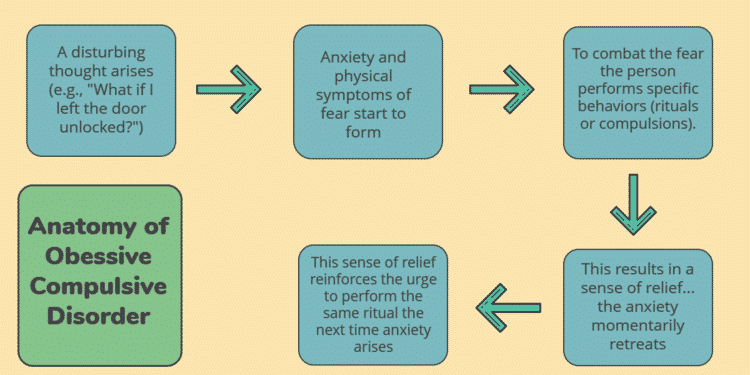
The graph above shows why OCD does not lessen or resolve, on its own. The compulsive behavior (or thoughts) do serve a purpose – they lessen the anxiety. When anxiety is reduced in this way, the compulsion grows stronger.
That is because it has been reinforced. Using compulsive behaviors to reduce anxiety is not healthy. It ends up creating more problems than it solves. Even so, because it effectively leads to a sense of relief, this solution (using compulsions) is reinforced. Anything that is reinforced is more likely to occur in the future.
One unhealthy result of using compulsions to get rid of fear is that the unrealistic thought that gave rise to anxiety is never pushed back upon. It is never put to the test.
It is similar to what would happen if a little child, who is fearful of jumping into the family swimming pool and being caught by her father, remained on standing next to the pool. Imagine if that young child made such a fuss that her parents gave up and told her to go play on the swings.
She would be relieved. Making a fuss and tantrums would be reinforced. Learning that it was safe to jump into her father’s arms would never happen. Her fear of being dropped, allowed to flounder in the pool, would remain intact.
Similar to the ‘repeater’ who fears that his wife will die unless he perfectly arranges and rearranges items on his desk, he feels relief once the compulsive ritual is completed. But the unrealistic fear that drove him to enact this compulsion has not been confronted.
In fact, that fear has been strengthened by his having performed the compulsive behavior. His brain has now been through one more training cycle that links relief from a fear of his wife dying, to the performance of a specific compulsion. The neuronal connections associated with these feelings, thoughts, and behaviors have now grown stronger.
When someone relies on compulsions to deal with the anxiety they fail to punch back against the fear. They are simply trying to escape. To win against OCD you have to punch back. You need to face the fear and say “Show me what you got” or better yet, “Go to hell.”
Firing Together, Wiring Together and OCD
There is a saying among neuropsychologists (who are known for pithy sayings, and for their mouthwatering fruit cake recipes). It goes like this “Neurons that fire together wire together.” (REF) That is brain cells that interact to form a thought, a feeling, a behavior, or a combination of those three, begin to form stronger connections with each other over time.
This is common sense, right? We may not have seen this happen, but each of us has experienced it before. It explains why performing complicated skills become easier with repeated practice over time.
When first learning to play a note on the guitar it is difficult to place your fingers in the proper position on the neck of the guitar. You read the note on the page of music, you know what strings need to be pressed in order to make that note, and you clumsily arrange your digits in the proper position. The result, at first, is pretty pathetic.
But after practicing for several days things get along much better. It begins to sound as though you are making music. Your fingers are starting to form notes more naturally.
This is because you have been training neurons to fire together, so now they have begun to wire together (that is, automatically talk with one another). Over time, with practice, the neurons responsible for holding onto the idea of forming a certain note on the guitar, begin to wire up with neurons responsible for placing fingers in the proper position on the neck of the guitar.
Intentional time spent practicing has caused neurons to ‘fire together.’ Now they have become ‘wired together.’
Read: OCD Quiz: How Sensitive Is Your OCD Radar?
How Does This Relate To OCD?
This same thing happens with OCD. That is, the neurons involved in the sequence of events described in the figure above begin to wire together. They form a circuit of sorts.
The nerve cells that are involved with an intrusive thought become more strongly connected to the neurons involved in the fear associated with that thought. This happens because they are frequently activated together (first the thought then the fear).
Of course, the next step in the sequence is where the nerve cells associated with fear go on to activate the neurons controlling the compulsive behavior. After this sequence is repeated many times these cells also become ‘wired together.’
Eventually, the entire sequence becomes a closely integrated web of brain cells capable of operating independently – they become automatized.
The key to beating OCD is finding a way to ‘unwire’ the neurons that maintain this painful pattern. To do this we must disrupt the pattern of neurons firing together (i.e., intrusive thoughts -> fears -> compulsive behavior -> diminished fear which is rewarding and reinforces this painful pattern).
The longer these patterns become disrupted, and the more frequently they become disrupted, the better.
Disrupted patterns lead to weaker connections between the neurons responsible for each part of the pattern. Weaker connections between neurons mean the amygdala (fear center in the brain) is less activated. A less activated amygdala means less anxiety.
The end result? OCD begins to lose its grip on your life.
OK, that was a lot to take in. If you got lost along the way that’s understandable. Take a few minutes to re-read that material starting with the Pattern Of Anxiety section.
Pay special attention to the infographics – it should make things much more clear. I want you to have a good grasp of these ideas because they are essential for understanding how to kick OCD to the curb. (Yes, that’s right, if you want your life back then you need to see OCD as an enemy – one who gets curb-stomped so you can come out winning).
Driving A Stake Through The Heart Of OCD (And Keeping It There)
Mastering OCD requires that you be able to disconnect neurotic anxiety from unrealistic beliefs. These two things need to be ‘unwired.’
BTW, it is “neurotic” anxiety because it is based on unrealistic beliefs (if the beliefs were realistic then the anxiety would not be neurotic).
One way to try and unwire anxiety from neurotic beliefs is to change the conclusion(s) that attach to these beliefs.
Let’s take a moment and look at this a little more closely.
Imagine you have OCD and one of the things you struggle with each morning before leaving for work is the compulsion to check and recheck that all the windows and doors of your house are locked.
The anxiety that drives this compulsion arises from your belief (or conclusion) that if some entry point remains unlocked, your home will surely be burglarized.
This conclusion, therefore, is an essential element of the pattern of thoughts, feelings/fears, and behaviors that keep you in an emotional prison.
Intrusive Thought: “The windows and doors to my home may not have been locked”
Conclusion: “Someone will break into the house and steal my possessions.”
Emotional Response: Anxiety/apprehension.
Compulsion/Behavioral Response: Double checking locks on windows and doors.
Emotional Response: Decreased anxiety.
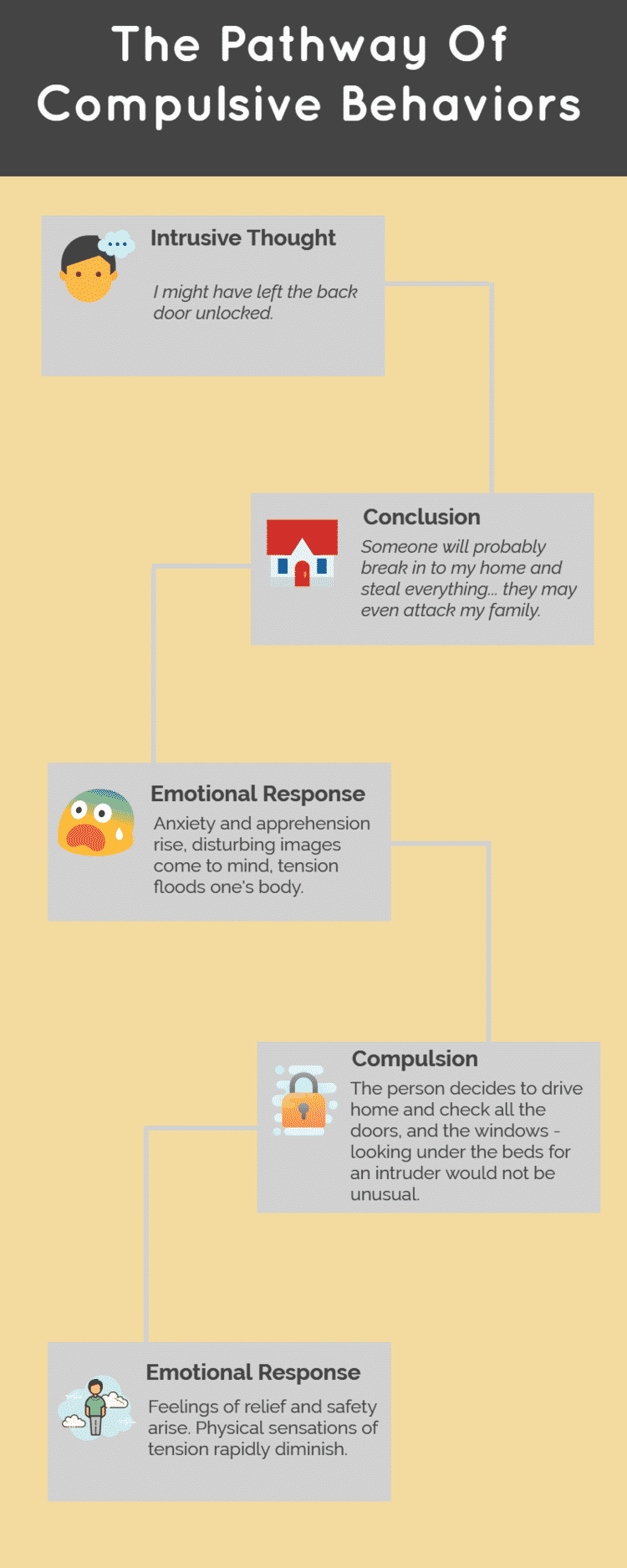
If the conclusion step in this pattern can be changed to something more realistic, and less threatening, the pattern becomes altered.
Imagine if the conclusion was changed to “I’ve checked the windows and doors already, it should be fine. This anxiety is just my brain playing tricks on me. The hell with that, I’m in control and not giving in to my fears.”
That sort of conclusion, even when it is not yet fully believed, begins to move the needle on how much anxiety controls your life.
Unfortunately, by itself, it is unlikely to move the needle very far. A good start, but just not enough.
Here is why. As a pioneer in psychoanalysis once said, “The patient needs an experience, not an education” (Fromm Reichmann). Intellectually convincing someone that their fear has little basis in reality seldom leads anyone to become fully relaxed and confident.
Think about it for a moment and you’ll understand how frequently this is the case. Let’s take as an example the woman who is terrified of getting on an airplane. She intellectually knows that the chances of the aircraft crashing are astronomically small. So what? She remains petrified.
Put her at the gate of an airline, bag in hand, ready to board and her vision will blur, beads of sweat will appear on her face. Her heart will be racing, palms perspiring and her stomach will be ambivalent about keeping a tight hold on lunch.
It sounds like midnight at a mosh pit. Even so, were you to ask her to recite statistics on airline safety she would still be able to do so. At the end of her statistical soliloquy, she would no doubt exclaim “What’s your point? I feel like I am about to die.”
The problem with those statistics is that they do not apply to her, and not to the plane she is about to board. At least that is how it feels to someone with those fears.
Overcoming this distortion requires a corrective experience. These corrective experiences invariable mean that the person begins to engage in the very thing that he or she is desperately trying to avoid. In this case, the woman needs to get on an airplane and have an uneventful flight. After having this initial success, she would need to get on many more flights in order to thoroughly unwire the OCD connection.
If she did this, we would expect that her fear of flying would soon be mastered. Not absent altogether, but reduced to the point that she was in control.
The bottom line, intellectual arguments may help someone take the first step toward facing his or her fear. Seldom, however, do such arguments fully extinguish the anxiety. For that, you need corrective experiences. End of story.
Read How Sensitive Is Your OCD Radar? Take This Quiz To Find Out!
Corrective Experiences: The Road To Mastery
Punching back against OCD is all about giving yourself corrective experiences. This may be a term that you have not heard of before, so we’ll take a moment to explain what it means.
A corrective experience is simply an interaction in life that causes one to confront distorted perceptions or beliefs. These experiences push back at the lies we sometimes tell ourselves.
They confront the misperceptions that have distorted one’s view of life so as to create a sense of perpetual danger and fear. In doing so, corrective experiences have the power to help us see reality for what it is, thereby encouraging us to respond in ways that are not driven by OCD.
Here are two examples of corrective experiences.
1. The person who had never flown in an airplane and was terrified of doing so because he believed it would lead to an ugly death by a fireball. Nevertheless, circumstances arose where he had to take a flight to attend a business meeting (or otherwise lose his job).
Despite the extreme anxiety, he felt when boarding the plane, his flight was uneventful, and in many ways, he thought it entertaining (due to his good fortune of being seated next to someone who shared his passion for golf).
His attendance at the business meeting was also a success, resulting in a promotion. One that required frequent air travel. He accepted the promotion, began to fly on a frequent basis, and soon found that his fear of flying had been extinguished.
The initial corrective experience was getting on an airplane to go to a business meeting and having the flight be uneventful. Had it been filled with turbulence or some emergency the flight would not have been a corrective experience.
As is normally the case, the corrective experience needed to be repeated multiple times in order for it to have maximum impact.
2. The young college-aged woman who, due to childhood abuse, was convinced that she had no ability to make and keep close friends. This did not make her anxious, but it had caused her to give up on the idea of ever having satisfying friendships. When going to college she was placed in a dorm room with another young woman who wished to be her friend.
Her new friend and dorm mate also introduced her to other young women who were similarly genuine and friendly. As a result, she had multiple corrective experiences demonstrating that she was perfectly capable of making and keeping friends. The erroneous belief that she lacked this capacity was successfully refuted by the corrective experience of being sought out and accepted by other young women.
In combatting OCD the situation is the same. Every person who suffers from OCD clings to some set of unrealistic beliefs that create anxiety. These beliefs must be confronted. Corrective experiences are the ultimate weapon for such confrontations.
Application To OCD
When facing off against OCD you will ultimately need to have experiences that refute the anxiety-provoking thoughts that rattle around in your head.
To make corrective experiences most effective a three-step plan is helpful.
The first step is psycho-education (taking a close look at the specific fears one has that are related to OCD). The second step is to build the practical skills that are necessary for successfully facing down these fears. The third and final step is to engage in activities that crush those fears and replace them with confidence.
An example will help make this more clear. Imagine you have a friend, let’s say a single man in his thirties, who obsessively worries about having his home broken into and vandalized.
Every morning when leaving for work he locks the door, walks to his car, starts the engine, and thinks “Did I twist the doorknob to double-check that the lock is set? Hmmm. I don’t remember twisting the knob. Or did I? Maybe I’m thinking of when I checked it yesterday…. No, it was this morning. I think… but I could be wrong.”
Eventually, he checks the door one more time. Unsurprisingly, he finds that it is locked. “Great” he exclaims out loud, then hurries back to the car checking his watch. Turning the engine over a new worry comes to mind…. “Did I lock the bedroom window?”
“I remember opening it last night when going to sleep and I’m pretty sure I locked it this morning… but maybe not.” He pauses before backing out of the drive, anxiety starting to press in once again. Images of someone breaking into the house, stealing his computer, stereo, maybe even his cat… “No, no one wants my cat.”
“Oh hell, I might as well go back and check. If I don’t I’ll be worried about it all day.”
And so it goes, until the poor guy finally drives off to work.
The corrective experience for this man is pretty straightforward (they usually are). Go to work without double-checking the doors, windows, or anything else. The corrective part of this experience is when he comes home and finds that his house has not been broken into while he was at work.
And after that? Press the ‘REPEAT’ button dozens of times. Yes, at least several dozen times. It is the repetitive process of engaging in one corrective experience after another that causes a literal re-wiring of the brain.
Read: 11 Things People With Anxiety Want You To Know
How To Curb Stomp OCD
At this point, we are almost ready to go through the straightforward steps to follow for gaining control over your OCD.
Before doing that, however, I want to briefly mention two things that many people find helpful to use when battling OCD. The first of these is to find an experienced therapist to help guide you through the process.
A good therapist will act as a coach, providing you will important feedback, teaching you skills, helping identify corrective experiences, and giving encouragement. It would be a good idea if you decide to work with a therapist, to find one that has experience helping people overcome OCD. You will also want to make sure that on a personal level you feel that the therapist is someone with whom you can work.
The second thing to keep in mind is that medication can be extremely helpful in overcoming OCD. Many people who read that last sentence will immediately think “Never! Not in a million years.”
OK, I get it. And that’s fine if you insist. But the fact remains that for many people a low dose of medication, prescribed over a limited period of time, is extraordinarily helpful.
Medication should not be relied upon with the idea that it will ‘cure’ OCD. It won’t. It provides a different benefit.
Medication can reduce the intensity of anxiety just enough to allow the person with OCD to effectively fight back. That is, it reduces anxiety to the point that it is much easier to engage in constructive experiences instead of compulsive behaviors when anxiety strikes.
That’s a huge victory.
When medication allows that sort of behavior, neurons begin to ‘unwire’, and new healthy patterns begin to form.
For a brief review of when to consider medication look at this resource.
The DIY Approach To Beating OCD
Next, we will get into the ‘nuts and bolts of how you can attack OCD and get control of your life again. There are several steps involved.
We will begin by looking at how to pick a goal, and then identify the steps it will take to reach that goal. After that, we will look at coping skills you need to learn in order to maximize your chances of success.
Coping skills are simply things you can do to reduce the stress and anxiety that will come up as you fight your anxiety. But first, let’s talk about selecting a goal and figuring out how to reach that goal.
1. Building Coping Skills For Less Stress And More Success
For this battle, you will want to build up some coping skills. Don’t go into a fight with OCD without making sure you have the tools needed for success. When confronted with the intense anxiety and stress that can arise when facing down fears, it pays to have some coping skills.
These skills will help put a damper on your anxiety. They act like a light dimmer that can turn down the intensity of fear, even if they cannot extinguish it all together (but that’s OK, you’re going to do the major beat down by not giving in to your compulsions).
There are many types of coping skills and we will focus on just two. For many people, this will be enough to get the job done. If you need more ideas for coping skills, however, the Very Well Mind website is a good place to continue your search).
2. Diaphragmatic Breathing
The first of these is called is diaphragmatic breathing. This is breathing that focuses on using your diaphragm (that sheet of muscle under your lungs).
Some people refer to this as ‘belly breathing.’ The idea is to focus on expanding your lungs by contracting your diaphragm when inhaling. This causes your diaphragm to draw downward, and your stomach to move slightly outward.
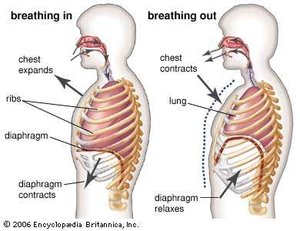
OK, you’re thinking “Who on earth cares? More specifically, why should I care?”
Here is the answer. You should care because using your diaphragm muscle stimulates your vagus nerve. This, in turn, sends signals to the brain that induces a sense of calm.
Say what? Yes, by stimulating the vagus nerve the body experiences a greater sense of calm. We don’t need to get into a lesson on anatomy and physiology, but it is important to note that the vagus nerve works a little like a brake pedal.
When it is stimulated it dials things down. Including anxious feelings. True story. Why do you think so many Eastern meditation practices include repeating a mantra in a near humming-like incantation? It is because the vibrations set up through humming stimulate the vagus nerve which in turn dials down anxiety and leads to greater calm.
In fact, there are many ways to stimulate the vagus nerve in order to get this impact, but diaphragmatic breathing is most common. Learning how to use diaphragmatic breathing is not difficult, and can be mastered quickly.
Don’t expect it to take away all of your nervousness. It won’t. What it will do is take the edge off of it, and the more you practice the more it works.
3. Strategic Brief Delay
When you are aiming to disrupt the OCD cycle (worry/compulsion/relief) a delay in responding is your friend. The longer you wait to respond to worry the stronger you become, and the OCD impulse grows weaker.
It is similar to developing greater willpower. Let’s pretend you wanted to lose a few pounds to get ready for summer. Let’s also pretend that it has been difficult to make progress because every time you go into the breakroom at work, you pick up a small snack. People are always bringing cakes and cookies to work, so the temptation is constantly in front of you.
One way to break this habit is to disrupt the immediacy of your response to seeing the tempting treats. You can do this by injecting a delay between the time that you experience the “I want a cookie” urge and the moment you pick up the cookie.
In this instance, you could insert a delay between the urge and the response by making a plan. Something simple. For example, you could write out a list of reasons you wish to lose weight. These might include: better health; fit into some clothing that is a bit too snug right now; looking slimmer for an upcoming event; being better able to compete in an upcoming 5K race, and so forth.
Then, when you are at work and go to the break room only to be blindsided by a plate of your favorite cookies, you have a plan. You trot back to your desk, fetch the coveted list from your drawer, read through the list, and then make a decision. “Shall I return to the breakroom, that culinary den of inequity, and indulge my cravings? Or do I stay the course, moving forward toward my health goals?”
Although this whole process just described may only take 60 seconds, the disruption it creates will often be sufficient to derail the habitual snacking cycle. It does two things that are very helpful.
1. It dials down the sense of temptation (by removing you from its source… the cookies in the breakroom)
2. It also enhances motivation by reminding you of the importance of not giving in to the urge to snack.
You can apply this same principle to OCD. Whether your urge is to double-check the locks on your front door, wash your hands, perform a ritual, or something else, add a hurdle to that process.
For example, “I can go back and check the front door again once I’ve gotten a mile away from the house on my way to work.” Or, “I can wash my hands again after I finish writing myself a note about how much I want to be free from this compulsion.”
Many times these small delays create enough emotional distance to make it fairly easy to resist the compulsion. Even in those instances when the urge is acted upon, one’s sense of control begins to grow stronger as a result of having forced yourself to delay responding.
Seven Steps To Beating OCD
Now let’s go over the seven steps you can take to overcome OCD fears and win your freedom. I will begin by giving a description of each step, and then move on to a brief illustration of what this looks like in real life.
1. When choosing where to start you want to write down ten fears that keep you trapped in OCD. This list might include:
“I need to disinfect all the kitchen counters again or someone will get food poisoning and die.”
“The bathroom really needs a good disinfecting. Especially the sink. It may look clean but it’s so gross – people spit in it whenever they brush their teeth.”
“How disgusting. Everyone touches the light switches in the house and who knows where their hands have been.”
“The Tupperware should really be disinfected before we get food poisoning. I just don’t think the dishwasher can kill all the bacteria that might grow on them.”
And on and on the list could go. Try and write down at least ten fears, all of the same type (that is, fears related to contamination, or fears related to intrusive thoughts, or to imperfection, and so forth (see the infographic above on Types of OCD).
2. For each fear write down the mental and/or physical compulsions you use to tame the anxiety
3. Assign each fear a number with ONE being the most difficult to face and TEN being the least difficult to face.
4. For the fear labeled TEN write down your entire thinking process and carefully chart how the fear progresses from the moment it first enters into your mind, to the point that you are able to move on (brace yourself, this could take some time).
Read What is Obsessive Compulsive Disorder and How To Overcome It
5. For each assumption you make in that charting process, consider alternatives that might also be true. For example, you may worry that touching the doorknob will contaminate your hand and make you sick if you do not immediately wash your hands.
A reasonable alternative is to think “Perhaps, but I have a healthy immune system and that should keep me safe. Also, almost no one else washes their hands whenever they open a door. The whole world is not sick and keeling over, so it must not be as dangerous as it feels.” Highlight each of these alternative explanations. You will be referring to them later.
6. Now it’s time to consider the specific steps you need to take to overcome the fear you’ve decided to tackle first (the one you labeled #10). What we want to do is break the process down into three, four, or even more small steps.
To do this you will need to consider what successfully conquering this looks like. If it was a fear of touching doorknobs perhaps your ultimate success, that final stage of being free from this fear, is when you no longer wash your hands after opening a door. Instead, you wash your hands only before meals or after using the bathroom.
Do you see how that sort of description of success gives you a crystal-clear goal upon which to take aim?
7. The final step is to move on and repeat this same process with the next fear on your list, and then the one after that, and the one after that, and so on.
You’ll find that the practice of confronting these modest fears makes it much easier, later on, to face more intense fears.

A Short Illustration
Imagine fear #TEN was the anxiety triggered by thoughts of contamination from touching doorknobs. Let’s also imagine that this fear was driving you to wash your hands every time you touched a doorknob.
No fun. Talk about bogging down your day. You practice using coping skills for a week or so – long enough that they have become easy to perform.
During that week you have given a lot of thought as to what small steps you will use to gradually but surely put a stranglehold on this fear of touching doorknobs. You decided to begin the process by waiting a full minute to wash your hands after touching a doorknob. This will be hard, that much is certain.
But you feel confident that you can wait that long. After all, you sometimes wait that long to wash your hands simply because there are no sinks with soap nearby every doorknob you touch.
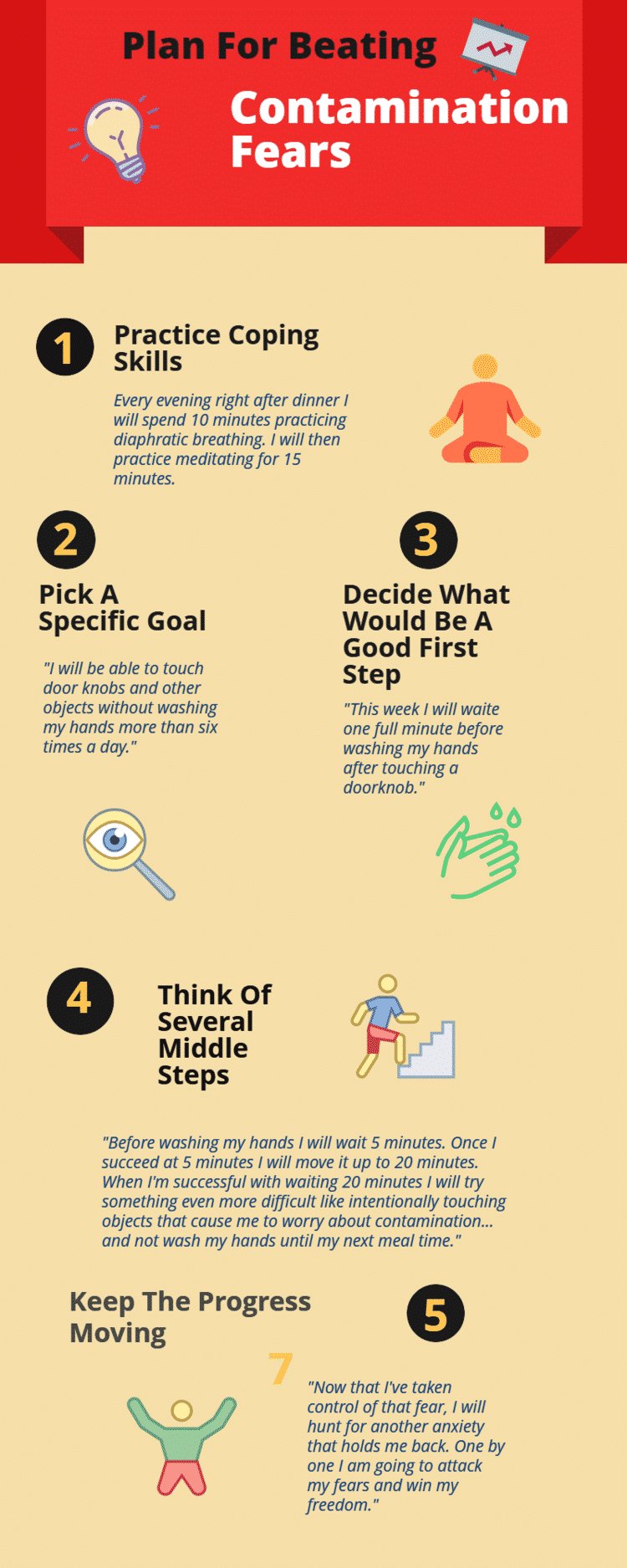
Taking control, however, making the delay intentional, feels good. You’re surprised to learn that even such a small step as waiting to wash your hands for a minute gives you a sense of control.
The next step you decided upon was to push the delay of handwashing from one minute to five minutes. When first writing this step down you could feel your throat tighten with anxiety.
“Five minutes sounds like forever when germs are crawling all over your hands, seeping into the pores of your skin and …” You stop yourself mid-thought.
Taking a deep breath, you redirect your thinking. “No, the germs are not sneaking into my blood system through the pores on my skin. I’ve got to stop being so dramatic. This is a perfectly good goal. I can do five minutes.”
At this point, you move on to write down several more steps you’ll need to take to get over the contamination fear. But only as it pertains to touching doorknobs. Other forms of contamination can be tackled after you have this victory under your belt.
The next step you wrote down was to limit yourself to ten times hand washings a day no matter how many doorknobs you had cozied up with.
Three more steps after that were then put on the list. The final step, the biggest challenge, would be to touch a public bathroom doorknob AND NOT WASH YOUR HANDS until just before your next meal.
That was a really tough one. A lot of thought went into identifying that goal and deciding to put it on the list. At first, it seemed extreme, but you soon realized that if you really wanted to be free from this contamination fear you had to go the extra mile. Once you were able to successfully complete this step you would be in control.
And when that happened, you were not about to give away the freedom you fought so hard to win.
PRO TIP: This same system can be used on most fears, not just those related to OCD.
Summary
To win the fight against OCD you must punch back against the fear. Giving in to the fear only makes it stronger.
OCD is a thief that robs you of happiness. It creates obstacles making it nearly impossible for you to reach your potential. OCD is your enemy. Treat it that way and punch back against the fear – as hard as you can. Keep punching until you’ve beaten it, and won the freedom from fear that you’ve desired all of these years.
And don’t forget… no giving up. Never ever give up. I know, you will have setbacks. There may be times when you feel defeated. When you momentarily back away and don’t face your fear.
That’s not the end of the world. Pick yourself up. Dust yourself off, and charge forward another time. And as many times as it takes after that as well. Continue to do this and you will ultimately prevail.
So, what are you waiting for? You have a happier, fuller life waiting. Go get after it.
If you want to read more blogs by Forrest Talley, then visit his website, Forrest Talley.
Resources:
“This Way Up” OCD Course
https://thiswayup.org.au/how-we-can-help/courses/obsessive-compulsive-disorder/#testimonials
For Children
Up And Down The Worry Hill Aureen Wagner, Ph.D.
What To Do When Your Brain Gets Stuck Dawn Huebner and Bonnie Matthews
For Teens
Talking Back to OCD: The Program That Helps Kids and Teens Say “No Way” — and Parents Say “Way to Go.” John S. March (Author), Christine M. Benton (Contributor)
For Adults
The OCD Workbook: Your Guide to Breaking Free from Obsessive-Compulsive Disorder. Bruce M. Hyman (Author), Cherry Pedrick (Author)
Brain Lock, Twentieth Anniversary Edition: Free Yourself from Obsessive-Compulsive Behavior. Jeffrey M. Schwartz (Author)
Written By Forrest Talley Originally Appeared In Forrest Talley
OCD can be a hard thing to live with, but the good news is that you can beat it. With the right guidance, you can let go of the constant anxiety, worry, and fear. Take control of your life, and live it without a sense of consternation and perpetual distress.
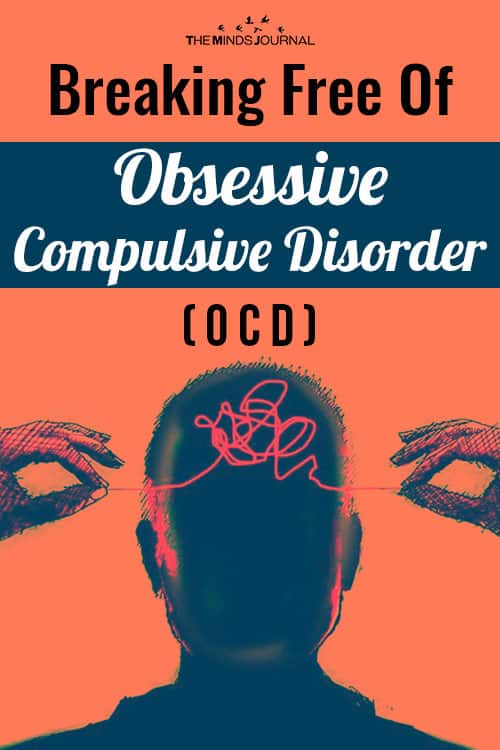


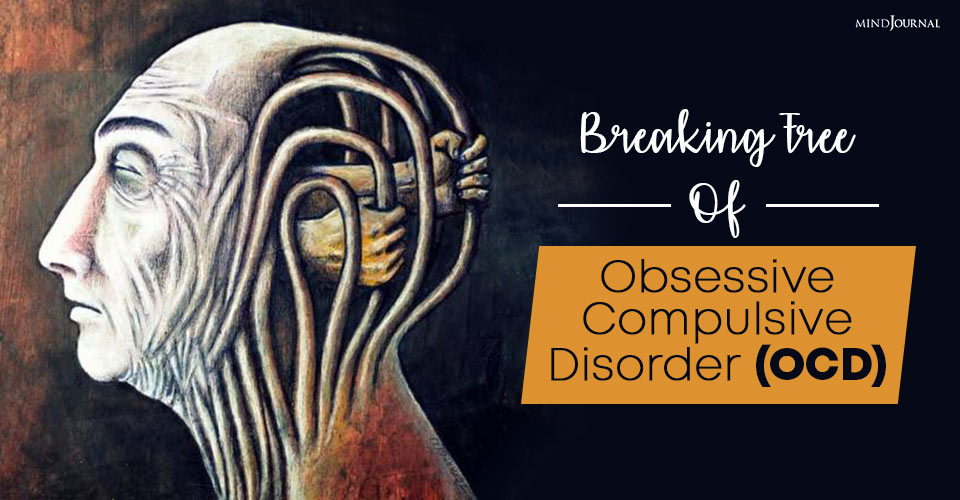

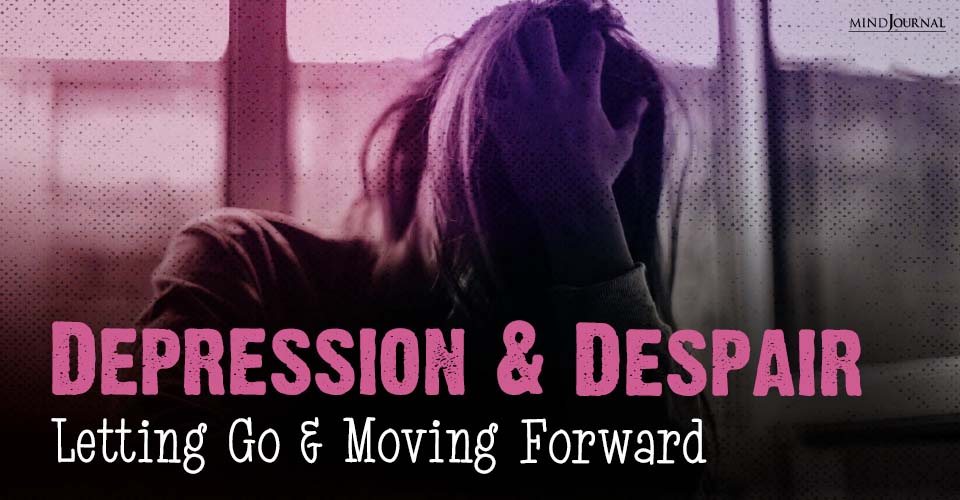

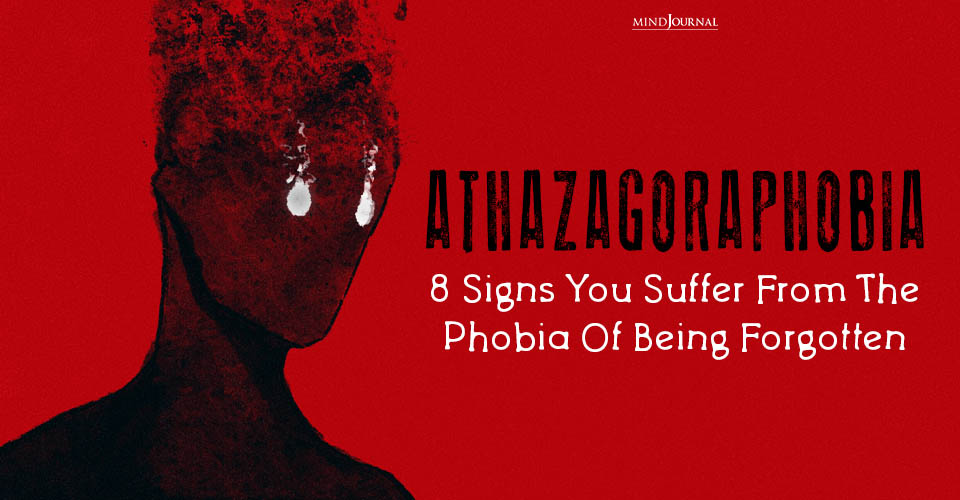
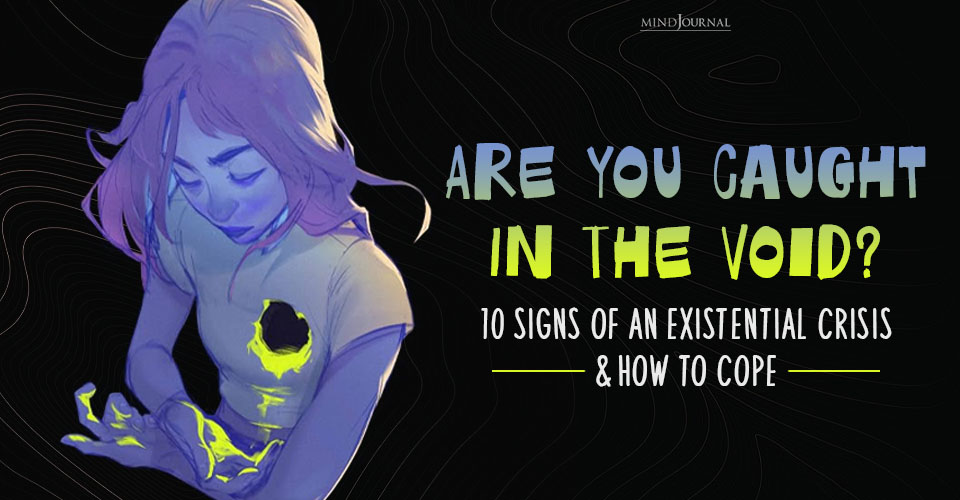


Leave a Reply